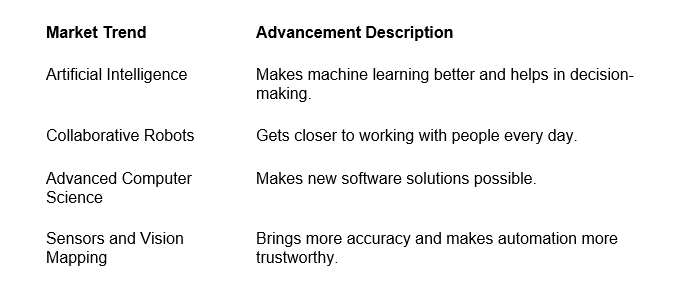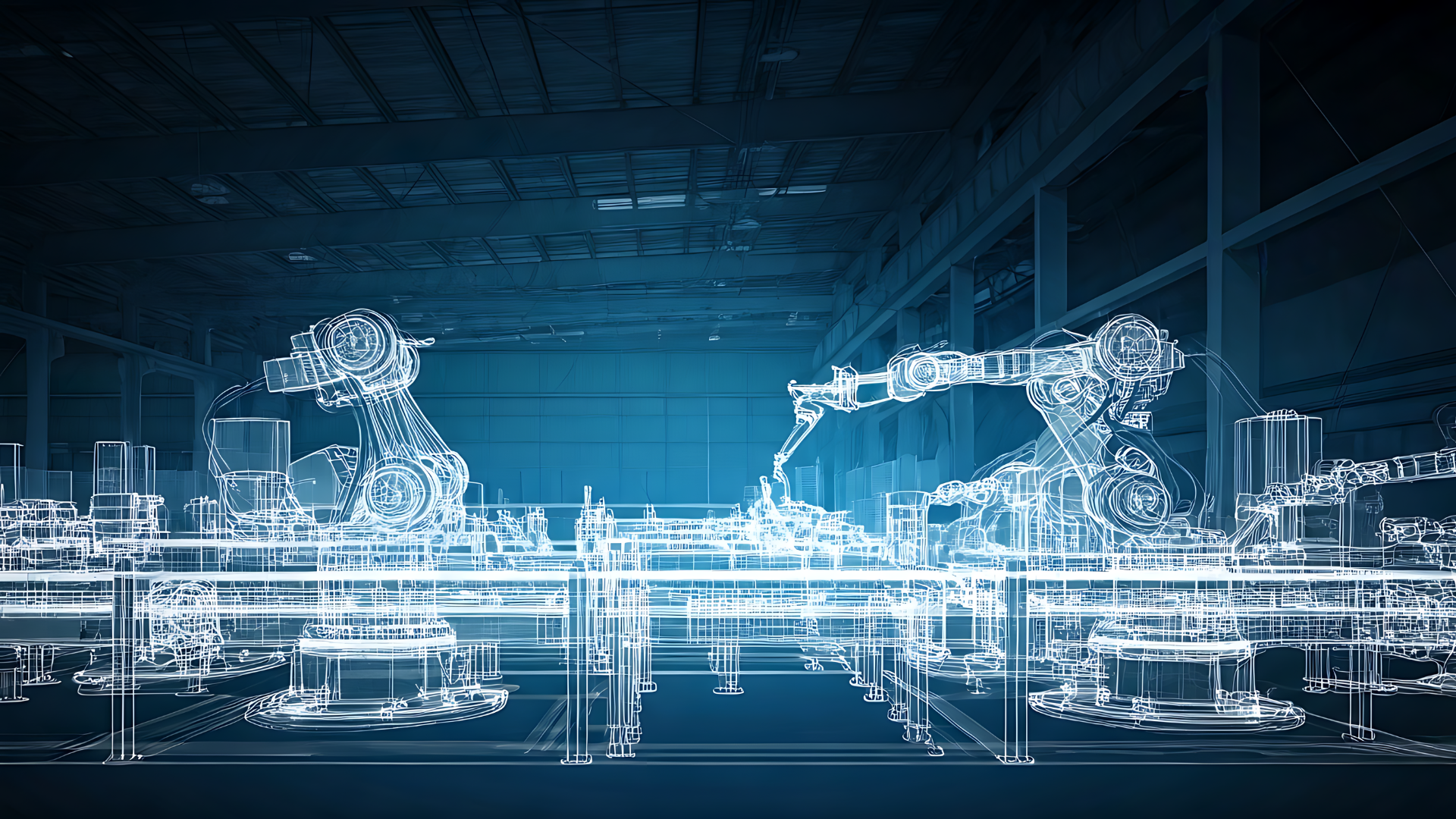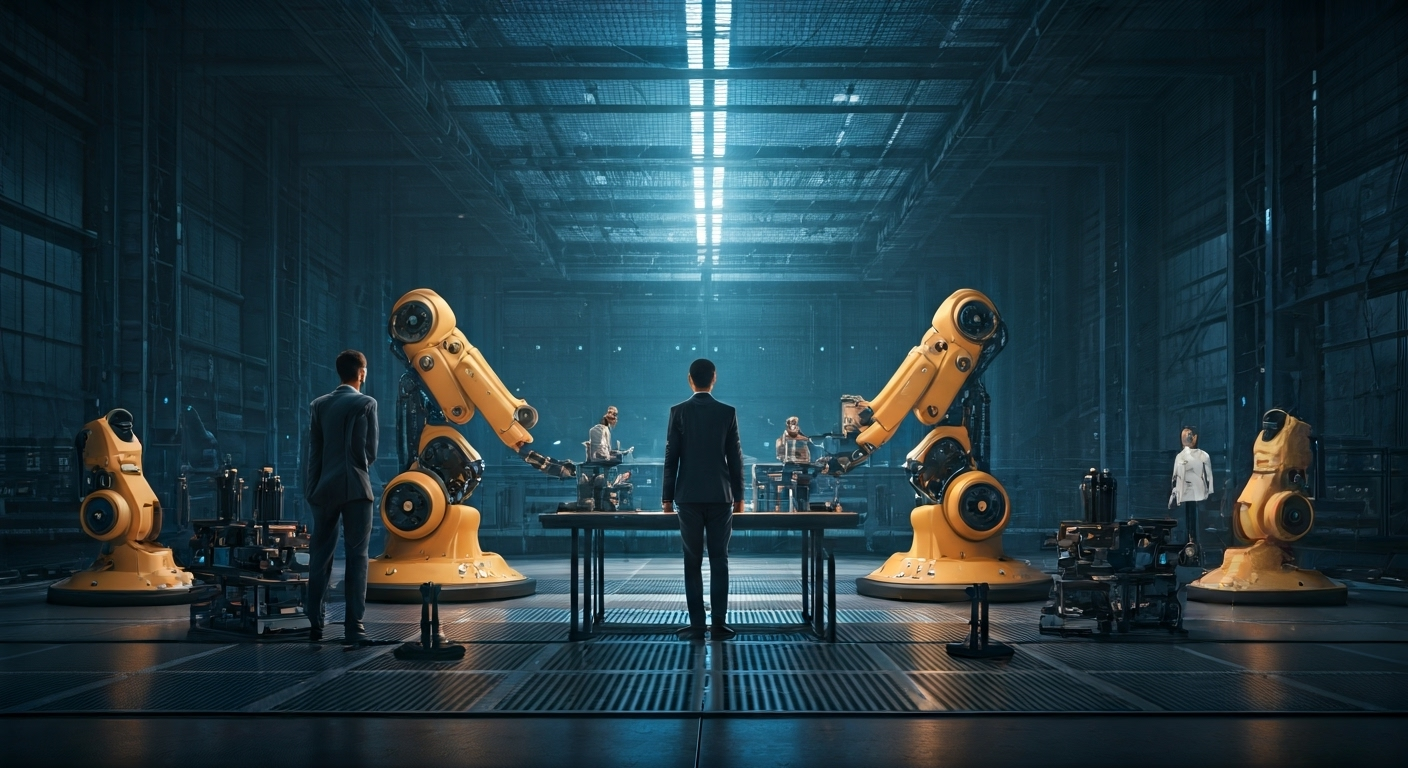The Impact of Robots Automation on Business Efficiency
Key Highlights
- Robot automation changes the way industries work by using robotic process automation, machine learning, and automation software. These tools help companies do the work in a better and faster way.
- Companies use many types of robots, like robots you can see and software robots you cannot, to help with repetitive tasks and make their work flow better.
- More and more, automation technology is used because of the push for digital transformation. The aim is to handle complex tasks safely and help many types of businesses grow.
- With smart image recognition and strong computer vision, robots can now work both in real life and in digital systems, doing their jobs with great care and detail.
- Automation software helps make business efficiency better, but starting can be hard because of the money needed at first and worries from workers about new changes.
- Robots take over some tough or risky jobs, so there is less need for human intervention in those places. This means people can spend more time on human work that matters most.
Introduction
The mix of robot automation and business process automation, with the help of artificial intelligence, is changing the way companies work all over the world. It helps take care of boring, repetitive tasks so people can focus on other things. When you use intelligent process automation, businesses get better and faster at what they do. Robots and automation technology work together to make sure every job is done right, both in the real world and online. This change in technology is a big deal for how a business runs. These tools not only handle daily workflows but also help make complicated systems better. With this, there is a new way to do things in any business process. Now, let’s look at the role, impact, and problems it brings to businesses today.
Understanding Robots Automation: Key Concepts Explained
Understanding Robots Automation in the Modern Business Landscape

Robotic process automation (RPA) is changing the way many places run their work. It does this by using rpa bots and new automation technology to take care of the same tasks that people used to do by hand. This change covers things like finishing tasks in a virtual environment and finding mistakes in business processes.
Today, more companies use these tools to make their work faster and better. When machine learning is added, these robots can also make smart choices. This means there are now lots of new ways for different companies to work. With less human intervention, these tools can make things more right and fast.
Key Components of Robot Automation Systems
Modern robot automation systems have several key parts that all work together to make things run smoothly. At the center of robot automation is automation software. This software gives robots the steps they need to do their jobs the right way and at the right time.
Computer vision and machine learning are important, too. These add-ons help robots look at what is around them, learn from what they see, and change how they act if needed. For example, when robots use image recognition, they can see items and group them. This is very helpful in places like factories and warehouses.
The machines themselves, known as programmable machines, are what let robot automation work in real life. These machines are built to make rpa implementations quick and easy so they can fit well with what a business is already using. When all these things come together, robot automation does more than just work. It changes to fit what people and businesses need now and in the future.
Types of Robots Used in Business Automation
Robots are now a big part of business automation. You can find them being used in many ways, and they each help with different jobs. Here are the main types:
- Collaborative robots: People call these cobots. They work right next to people and help them do jobs like putting things together or checking quality.
- Industrial robots: These machines are strong and handle many repetitive tasks in factories. They do things like welding and painting on a big scale.
- Physical robots: These work in the physical world. You might see them moving products or helping with material handling in warehouses.
- Software robots: This type is a form of RPA. They run digital tasks, such as automating ticketing and data entry on computers.
Each robot type is built to boost how much a business can do, depending on what is needed. For example, collaborative robots help people work together, and industrial robots are great for jobs where lots of items need the same steps. Companies can use a mix of these robots to handle repetitive tasks and achieve better results with automation.
Driving Forces Behind Adopting Robot Automation

The push for robot automation is happening because companies want to keep up in a world that is changing fast with digital transformation. The use of automation helps to make business processes easier and better. This can help with work flow and can help meet what the industry asks for—like more work done in less time.
Now, the ongoing race to be more safe and efficient is making the use of automation even more common. When companies use automation, they free people from doing boring or risky jobs. This lets workers focus on new ideas that bring more value. Because of this, many types of businesses are picking automation as a must-have tool if they want to do well today.
Market Trends and Technological Advancements
The world is seeing a big step forward with artificial intelligence and automation technology. These tools are helping with industrial automation and more. Right now, the trends show there will be smarter robots. This will happen because of features like image recognition and ways to guess what comes next using data.
Many industries are using software automation more. This use helps make back-office tasks easier, and it gives people new ways to make things like customer support better. In the same way, industrial robotics is getting bigger every year. The creation of collaborative robots, or cobots, has let them work with people. These robots make work faster and safer.

You can see the growth from industrial robotics to automation in healthcare. All this shows just how much the future may bring for companies who want to get the most out of their work.
Shifting Workforce Dynamics and Labor Shortages
The rise of automation is changing the way people work all over the world. Robots are now able to do many repetitive tasks. Because of this, the need for people to do boring jobs is going down. This means companies can let their staff work on jobs that need more creativity and smart thinking.
There are now workforce shortages in a lot of fields. This has pushed up the need for robots, especially in areas like customer service and material handling. So, many businesses use automated systems to help out. These systems can do the job with good productivity and accuracy.
Also, the link between automated systems and the human worker is now different. Automation is not about taking away people’s jobs. It is about reducing human intervention and helping do more work in less time. When robots handle the repetitive tasks, workers have time to do the things where people matter more—like thinking deeply and showing care to others.
Core Benefits of Robot Automation for Businesses
Adding robot automation can bring many good things to your business. One big plus is better business efficiency. Robots help by using smart workflows to boost how you work. This means tasks can get done faster. Also, you use your resources in a smarter way.
The benefits of RPA in process automation or business process automation are not just about speed. It also helps to cut down errors and makes sure your business process follows the rules. When you try intelligent process automation, you get both the power of automation with smart decision-making at the same time. If you use these tools, your business can save money, work better, and stay ahead of the others.
Boosting Productivity and Speed
Robots are bringing big changes to process automation. They help deliver goods faster and raise the level of what people expect from these systems. They can do both physical and virtual tasks much faster than people. Because of this, they get more done in less time.
Think about how robots help with material handling. They load and unload goods fast, sometimes in just a few seconds. When it comes to complex tasks, robots can handle them with great care and the same results every time. This helps businesses speed up how quick work gets done and make sure every item is made right.
Also, robots can take over physical processes without stopping. There is no down time when robots do the job. This makes everything move better, faster, and sets a new standard for how work gets done. This is how robots are changing what it means to work in today’s world.
Enhancing Accuracy and Reducing Human Error
Mistakes which were almost certain with manual work can now be taken out when you use robotic process automation. With software solutions, RPA helps you get more accuracy in handling set business processes.
There are tools like rpa bots. They follow steps in a strict order, so there is less chance of straying and more chance of doing things right. If you, for instance, put inventory checks on automatic, there will be no mistakes, unlike when people do these tasks on their own and may slip up. Also, many forms of business process automation can use smart tech to spot issues early and fix them right away.
If you use these ways of process automation, your company will have fewer chances of human error. This lets you see more steady, sure results, which builds trust and makes your work stronger.
Challenges and Risks Associated with Robot Automation
While using rpa software and process mining is helpful, there are some problems with it. To start, setting up these tools can cost a lot. This can really stretch the budget for businesses. Companies have to think about spending this money now and getting returns later. Many keep worrying about how to pay for it while trying to see if the cost is worth it in the end.
Businesses in the financial services field deal with more problems when they try to use automation everywhere. All the tools need to work together. This needs good planning and people who know what they are doing. Getting past these problems is very important. If companies do, they can get the most out of their automation systems.
Initial Investment and Implementation Barriers
Adopting automation needs a lot of money at the start. This is because you have to buy rpa software or industrial robotics tools. Many businesses worry about how long it will take to get their money back.
A big reason for these implementation barriers is that many companies do not know much about automation software. Problems like needing things made to fit their needs also make it harder. Changing how things normally work to allow for rpa bots can also be a tough thing for the team.
But there are still many chances to do well. Good rpa implementations can help get your money back fast if you plan well and have the right tech people. This makes it easier for your team to adapt to the new way of working.
Addressing Employee Concerns and Job Displacement
Employee concerns about automation are big. Most people worry about job loss because the work that needed human judgment before is now done by machines. A Harvard Business Review study highlights how important it is to bring in automation technology in a way that lasts.
Automation does not always take jobs away. It changes how workplaces run, so it pushes current workers to learn new skills. Keeping a trained workforce allows human workers and robots to work well together and get better results.
With good training and the right introduction to automation technology, companies make sure that workers stay valuable as the way we work changes.
Conclusion
To sum up, bringing robot automation into business can greatly boost how fast and well companies get things done. When the business uses advanced technology, it can do tasks faster, cut down on human error, and change to fit what the market needs with ease. But, there are some things to watch out for, like how much it costs at first and the need to help workers adjust. Using robot automation puts your business ahead in a tough market, and it also shows you think ahead about your team and work. If you want to see what robot automation can do for your business efficiency, get in touch for a chat today!
Frequently Asked Questions
How does robot automation increase business efficiency?
Robot automation makes business work better. It takes over repetitive tasks and makes workflows run on their own. With process automation and intelligent process automation, businesses can get work done faster and with fewer mistakes. This helps people save time and do important jobs that matter more.
What industries benefit most from robot automation?
Industries such as manufacturing, logistics, financial services, and customer service find the use of industrial robots very helpful. Using process automation and business process automation tools helps these areas do better at work. The use of robots makes the business process smoother and helps many sectors make their work better.
Can small businesses afford to implement robot automation?
Yes, small businesses can use automation software and rpa tools without spending too much. There are affordable rpa software options and modular software solutions out there. They make it simple for smaller companies to get started and grow when they need to.
What are common misconceptions about robots in the workplace?
Many people think that robots take over all the jobs people do, but this is not true. Human workers are still needed for many things. There are times when you need human intervention and human judgment to get the job done right. Robots help people by working with them. They come together to connect the physical world and computer software.
How do businesses prepare employees for automation integration?
Businesses use training and workforce development programs. They want people to understand automation technology. This helps workers adjust when new systems come in. With this way, the whole team stays in step with the digital transformation changes.



